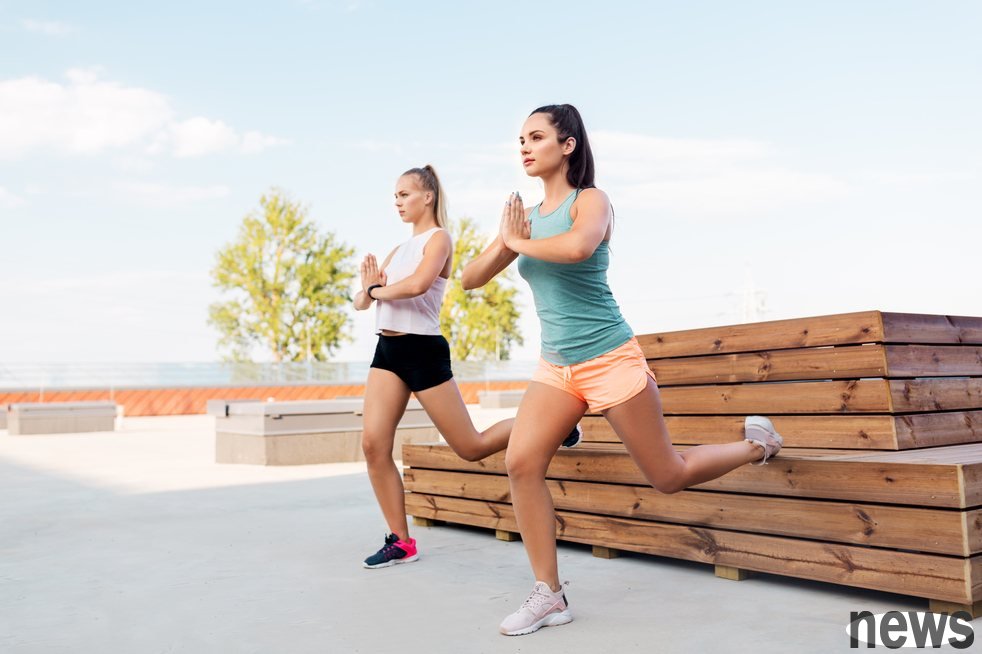Generally speaking, when it comes to muscle strength training, most people tend to discuss obvious muscle groups such as chest, arms and shoulders, and leg training is often ignored. However, leg training is not only important for shaping strong thi...

Generally speaking, when it comes to muscle strength training, most people tend to discuss obvious muscle groups such as chest, arms and shoulders, and leg training is often ignored. However, leg training is not only important for shaping strong thighs and hips, but also helps in promoting new skeletons, strengthening bones and improving posture.
experts point out that through alternating high-weight and medium-weight training, you can effectively strengthen your strength and develop functional muscles that are both beautiful and beautiful, while improving daily life and sports performance.
What is the difference between high-weight training and medium-weight training? High weight training focuses on a lower repetition range (e.g. 10 to 12 times per set) to build strength and strength with heavier loads. In contrast, moderate-weight training is designed to increase muscle endurance, increase endurance and promote New Chen Daisha with a higher number of repetitions (e.g., 20 to 25 times per set).
To optimize leg training, you can do your legs 2 to 4 times a week, such as one day of high weight training and another day of medium weight training. The following 4 leg exercises can strengthen your quadrilateral, back leg muscles, gluteal and calf muscles.
1. Side lungeSide lunge can stretch the gluteus muscles, quadrilateral muscles and inner thighs, and can also improve the activity ability of the hips. First stand straight, split the two feet and be the same width as shoulders, cross the arms, or hold the calves in hand to increase difficulty. Then walk to one side, bend your knees and lower them into lunges while keeping the other leg straight. Use your legs to push the body back to the starting position and repeat it on the other side.
side lunges can enhance side strength and stability, and are important for activities involving directional movement.
2. High-foot cup squatHigh-foot cup squats mainly train the quadrilateral, back leg muscles and gluteal muscles, while improving balance and coordination. Starting from the lunge position, one foot is in front and the other foot is behind, put the horn on the chest. Lower your hips until the rear knee almost touches the floor, keeping the front knee close to the foot. Push the front foot and restore the standing state, complete the repetition of one side and then switch the legs.
High-foot cup squats help strengthen the upper body and core strength while effectively exercising the leg muscles.
3. Bulgarian Leg Split SquatBulgarian Leg Split Squat is a challenging and changing action that can separate the two legs and add balance elements at the same time. Standing in front of the stool, place a foot on the stool. Hold the bell on both hands, or place the bell on your shoulders. Lower your body, squat down on your standing legs, keep your upper body upright, and then use your front foot and push the ground to return to the standing position.
Bulgarian leg split squats are suitable for strengthening the strength of the quadrilateral and gluteal muscles, and improve balance and coordination.
4.Hip pushHip push is one of the most effective exercises for the gluteus muscles and the back of the leg muscles, and can also improve core stability and lower back strength. Sitting on the ground, leaning your upper back against the stool, pushing your hips upwards by pressing them, you can place a lever above your lateral to increase resistance. If using a bar, lift it with hip strength until your body forms a straight line from shoulder to knee, then lower back to the starting position and repeat.
Hip push trains strong and strong gluteal muscles, which is very helpful for sports performance and preventing injuries.
In addition to exercising the muscles through exercise, how to maintain the health of leg muscles? According to the information from Cliffland clinic in the United States, in order to avoid problems with leg muscles, you should pay attention to the following 4 things:
1. People who maintain healthy weightsare more likely to damage muscles. Excessive weight can put pressure on your legs, causing you to face higher risks of injury, such as strain.
2. Keep moistureDrinking a lot of water and other liquids can reduce the chance of leg cramps.
3. Stretch and heat before exerciseBefore performing physical activities, the body must be heated to stretch the leg muscles and improve the activity. During exercise, strength should be gradually increased.
4. Note that the use ofCertain drugs may cause leg cramps.